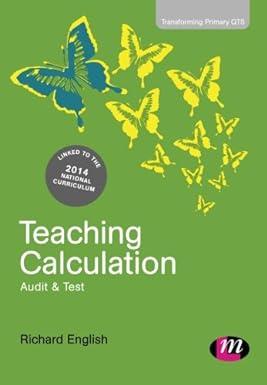Question
Revenue Recognition Case Mixed Up Company1 Mixed Up Company manufactures cordless mixers for use in the kitchens of consumers. Mixed Up sells to retailers, which
Revenue Recognition Case Mixed Up Company1
Mixed Up Company manufactures cordless mixers for use in the kitchens of consumers. Mixed Up sells to retailers, which then sell the mixers to the ultimate consumers. Mixed Ups customers have the option to purchase mixers with or without warranties. One of Mixed Ups retail customers is Hoos in the Kitchen? (HK). On January 1, Mixed Up sells to and receives payment from HK for 100 cordless mixers with a one-year warranty for $50 each. The mixers are delivered by Mixed Up to HK upon receipt of payment, and the warranty also is initiated at that time by Mixed Up. This warranty provides for a replacement of the mixer if the mixer fails to work properly within one year of the date of purchase. Mixed Up typically sells its mixers with no warranty for $40 per unit. The cost to manufacture each mixer is $32.
Mixed Up also provides its retail customers with sales incentives in the form of volume discounts on annual purchases of mixers with warranties paid at the end of the annual period. The agreement between Mixed Up and HK provides for the following volume discounts. Additionally, the probability of purchases for each volume level as estimated by Mixed Up is provided based on historical experience and forecasted sales to HK for the year.
Number of mixers purchased
Less than 1,000 1,000 to 1,999 2,000 or more
Discount Probability
0% 40%
5% 40% 10% 20%
The discounts are retroactive. For example, if 2,000 mixers are purchased during the year, a discount of 10% will be applied to all 2,000 mixers.
Requirements
Using guidance from your book and/or the FASB Accounting Standards Codification (ASC Topic 606), apply the revenue recognition standard to Mixed Up Companys transaction(s) with Hoos in the Kitchen. Specifically, perform the five steps to apply the revenue recognition principle as follows:
-
Step One: Identify the contract with the customer. Provide an explanation to support your conclusion.
-
Step Two: Identify the performance obligation(s) in the contract. Provide an explanation to support your conclusion.
-
Step Three: Determine the transaction price. Provide an explanation/analysis to support your conclusion.
1 Adapted from a case developed by the Ernst & Young Foundation.
-
Step Four: Allocate the transaction price to the performance obligation(s). Explain your allocation decision.
-
Step Five: Recognize revenue when the performance obligation(s) are satisfied. For each obligation, determine whether revenue should be recognized at a point in time or over a period of time, providing an explanation for your conclusion.
-
Prepare journal entries, with dates, that Mixed Up should use to record revenue related to the transaction with HK.
Step by Step Solution
There are 3 Steps involved in it
Step: 1

Get Instant Access to Expert-Tailored Solutions
See step-by-step solutions with expert insights and AI powered tools for academic success
Step: 2

Step: 3

Ace Your Homework with AI
Get the answers you need in no time with our AI-driven, step-by-step assistance
Get Started


